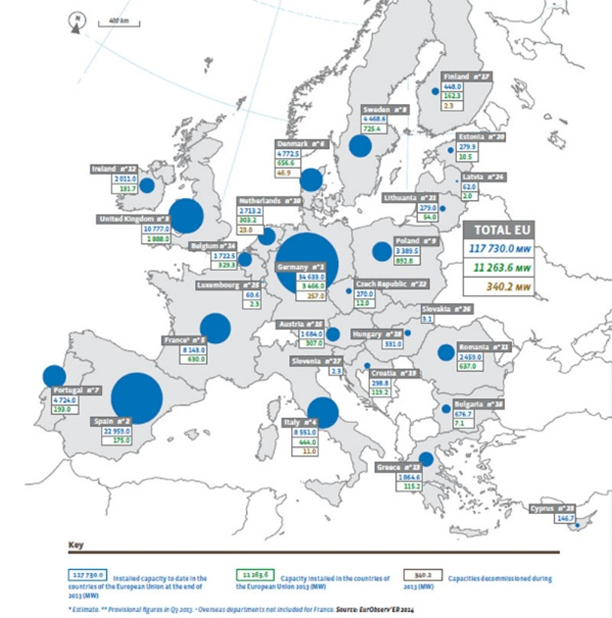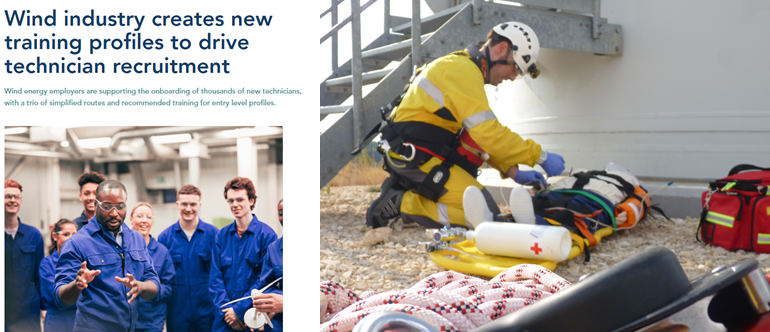The Wind Sector Faces a Lack of Workers and Increases the Need for Workers with Good Response to Emergencies
According to the World Council of Wind Energy (GWEC), despite the record growth achieved within the industry for wind power during the year of 2020, the world is still required to increase its capacity for new wind power by three times throughout the next decade. Only such an increased rate of adoption would allow the world to reach global climate targets and achieve net zero (Global wind power growth must triple over next decade to achieve Net Zero, 2021). Moreover, such an increase will also translate in an equally greater demand for skilled labor. This need for integrating new workers within the wind power industry will be one of the major challenges that the energy sector will face by 2030.
The wind power sector has achieved major strides during the year 2020. Regardless of the challenges presented by COVID-19, the wind industry experienced a record newly installed capacity of 93 GW, meaning an increase of 53% from the previous year (Global wind power growth must triple over next decade to achieve Net Zero, 2021). Despite these positive results, the world will still be needing to install additional units over the next ten years at three times the current rate in order to achieve net zero goals.

The labor market needs to incorporate qualified professionals in both the wind and industrial sectors, and also qualify new candidates. The difficulties that we currently find in attracting labor will partly be solved by hiring low-qualified personnel who will be trained to acquire the necessary skills
In this regard, RISKREAL will be a good starting point as a tool to consider when establishing a solvent basis for personnel selection. The Global Wind Workforce Outlook 2022-2026 outlines that, the wind sector currently boasts 145,000 field workers that are spread over 45 countries. Despite this large number, 142,100 new workers will be needed to join the sector during the next five years. These will be required in order to achieve total to the amount of 568,800 technicians, an amount that will enable not only the construction and installation of 557 GW of wind power capacity between the time period of 2022 and 2026, but which also allow the proper service of the current existing fleet (More than half a million wind technicians needed by 2026 for wind energy construction and maintenance, 2022). This additional workforce will be recruited from full-time education or from people moving into wind power from other sectors.
This challenge is an important one, as it will also be necessary to replace the workers who, due to age and working time within the wind sector, are required to leave in order to make way for new generations.
New candidates are currently being recruited from in other professional profiles, such as the military field, heavy industry personnel, or other production chains; who lose their jobs due to current geopolitics and economic conditions.

The challenge of incorporating a significant number of new workers, the wind sector worldwide presents another problem, workers must be able to maintain levels of concentration and response to an emergency that guarantees correct action. For those who in an emergency situation, workers do not behave as expected, the sector is isolated, has long distances from urban centers and offshore installations are increasingly common.
In this sense, it is vital to ensure that candidates have soft skills and emotional stability that must be measured before hiring, with the aim of having the best candidates in this regard, with or without technical qualifications. The new challenge of incorporating labor will be one of the most important in the sector by 2030.
References:
Global wind power growth must triple over next decade to achieve Net Zero. (2021, March, 25). GWEC. Retrieved December 3, 2022 from https://gwec.net/global-wind-power-growth-must-triple-over-next-decade-to-achieve-net-zero/
More than half a million wind technicians needed by 2026 for wind energy construction and maintenance. (2022, September, 19). GWEC. Retrieved December 3, 2022 from https://gwec.net/more-than-half-a-million-wind-technicians-needed-by-2026-for-wind-energy-construction-and-maintenance/
Written by: Eduardo Garcia Mazagatos, Training manager – QHSE manager
from ADVENTIS Solutions







